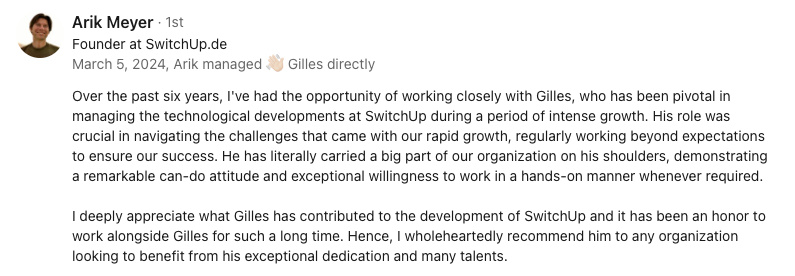Abstract:
The article discusses the Chief Technology Officer's perspective on the potential of CRISPR technology in biotechnology and genetic engineering. It explains the capabilities of CRISPR in targeted gene editing for various sectors such as agriculture and healthcare. The CTO emphasizes the need for strategic planning, resource allocation, and adherence to ethical guidelines in implementing CRISPR technologies. Collaboration and empowering technology and engineering directors are highlighted as crucial for maximizing CRISPR's potential. The CTO is committed to staying updated on CRISPR research and ethical considerations to drive sustainable growth and address global challenges in healthcare, agriculture, and environmental conservation through biotechnology innovations.
Harnessing CRISPR for Biotechnology Innovations: A CTO's Perspective on Gene Editing and Genetic EngineeringThe Promise of CRISPR for Biotechnology
As a Chief Technology Officer, I am always scouting for cutting-edge technologies that have the potential to revolutionize industries. Lately, I've been captivated by the transformative potential of CRISPR for biotechnology and gene editing. This groundbreaking technology has the potential to reshape the way we approach genetic engineering and biotechnology innovations.
Understanding CRISPR and Gene Editing
CRISPR, which stands for Clustered Regularly Interspaced Short Palindromic Repeats, is a powerful and precise gene-editing technology. It allows scientists to make targeted modifications to the DNA of living organisms, opening up a world of possibilities in genetic engineering for various sectors, such as agriculture, healthcare, and environmental conservation.
CRISPR Applications in Biotechnology Innovations
CRISPR is already making waves in various industries. For instance, in agriculture, CRISPR can help create crops with improved yield, nutritional content, and resistance to pests and diseases. Meanwhile, in healthcare, CRISPR has the potential to treat or even cure genetic conditions, cancer, and infectious diseases.
Navigating the Role of CTO in Genetic Engineering
As a CTO, my role in this brave new world of genetic engineering involves both strategic planning and hands-on technical involvement. I must work closely with our directors of technology and engineering to identify the most impactful applications of CRISPR and allocate resources accordingly. Additionally, I need to ensure that our company remains at the forefront of ethical guidelines and regulatory compliance in genetic engineering.
Collaboration: Key to CRISPR Success
Another crucial aspect of my role as CTO is fostering collaboration between various departments and external partners. By working together, we can drive innovation, improve efficiencies, and ensure that CRISPR technologies are developed responsibly and ethically. Collaboration is vital for staying ahead of the curve and maximizing the potential of CRISPR in genetic engineering and biotechnology.
Empowering Directors of Technologies and Engineering
To successfully implement CRISPR applications within our organization, it's crucial to empower our directors of technologies and engineering with the right resources and training. This includes ensuring they are up-to-date with the latest research and trends in CRISPR and providing access to cutting-edge tools and infrastructure to support their work. By investing in our team's development, we can ensure that we're well-positioned to make the most of CRISPR and gene editing opportunities.
Future of CRISPR and Biotechnology Innovations
CRISPR and gene editing are still relatively new technologies, and their full potential is yet to be realized. As a CTO, I'm committed to staying informed on the latest CRISPR research, applications, and ethical considerations. By doing so, I can help guide our company in seizing opportunities in CRISPR and biotechnology, driving sustainable growth, and solving critical global challenges in healthcare, agriculture, and environmental conservation.
Ultimately, the successful implementation of CRISPR and gene editing technology will rely heavily on the collective efforts of technology leaders, engineers, and scientists. By embracing collaboration, prioritizing education, and staying committed to ethical practices, we can unlock the full potential of CRISPR and usher in a new era of biotechnology innovations.
You might be interested by these articles:
- Revolutionizing Medicine with Biotech
- The New Frontier in Biotech
- Biotechnology's Role in Turning Waste into Wealth





